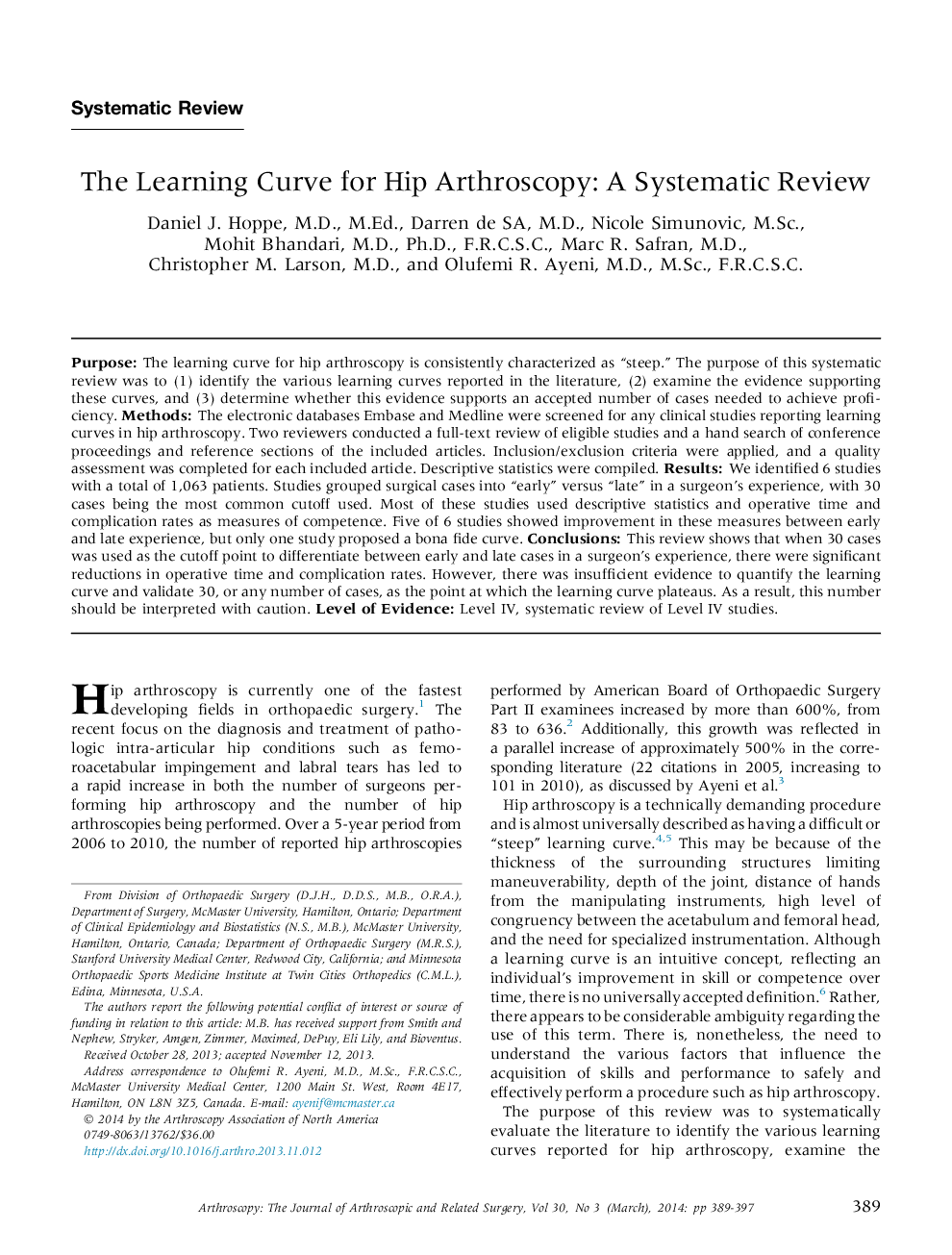| Article ID | Journal | Published Year | Pages | File Type |
|---|---|---|---|---|
| 4042802 | Arthroscopy: The Journal of Arthroscopic & Related Surgery | 2014 | 9 Pages |
PurposeThe learning curve for hip arthroscopy is consistently characterized as “steep.” The purpose of this systematic review was to (1) identify the various learning curves reported in the literature, (2) examine the evidence supporting these curves, and (3) determine whether this evidence supports an accepted number of cases needed to achieve proficiency.MethodsThe electronic databases Embase and Medline were screened for any clinical studies reporting learning curves in hip arthroscopy. Two reviewers conducted a full-text review of eligible studies and a hand search of conference proceedings and reference sections of the included articles. Inclusion/exclusion criteria were applied, and a quality assessment was completed for each included article. Descriptive statistics were compiled.ResultsWe identified 6 studies with a total of 1,063 patients. Studies grouped surgical cases into “early” versus “late” in a surgeon's experience, with 30 cases being the most common cutoff used. Most of these studies used descriptive statistics and operative time and complication rates as measures of competence. Five of 6 studies showed improvement in these measures between early and late experience, but only one study proposed a bona fide curve.ConclusionsThis review shows that when 30 cases was used as the cutoff point to differentiate between early and late cases in a surgeon's experience, there were significant reductions in operative time and complication rates. However, there was insufficient evidence to quantify the learning curve and validate 30, or any number of cases, as the point at which the learning curve plateaus. As a result, this number should be interpreted with caution.Level of EvidenceLevel IV, systematic review of Level IV studies.
